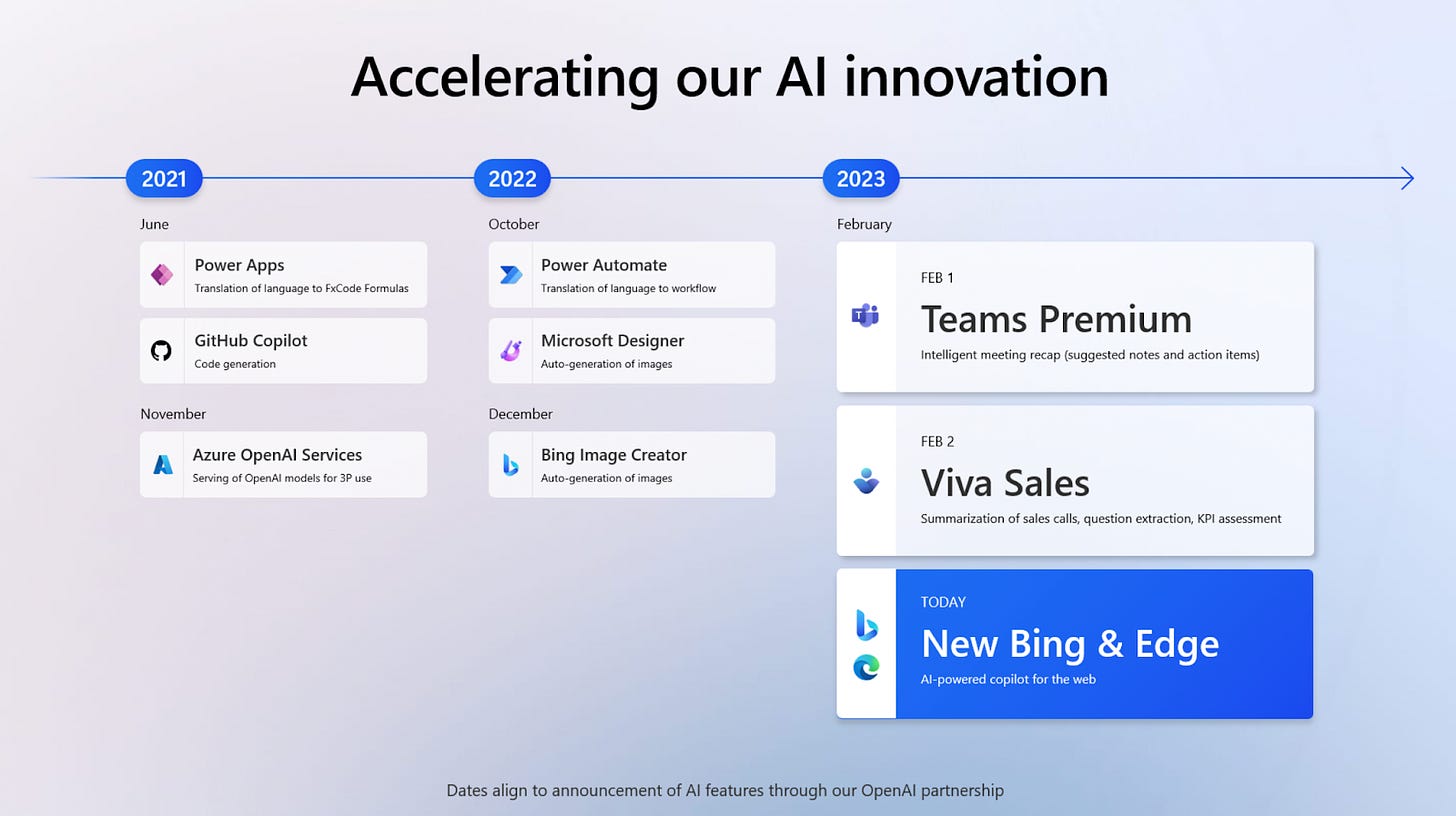ChatGPT, Bing and Big Tech's Nash Equilibrium
The new chatGPT-enhanced Bing might just be the biggest side story in Microsoft’s quest to maintain its dominance of personal and corporate computing. In my opinion, the new Bing was never intended to be Microsoft’s Google killer.
Why? You may ask. To answer that question we need to do a quick detour into Game Theory.
What is a Nash Equilibrium?
According to Wikipedia, A strategy profile is a set of strategies, one for each player. Informally, a strategy profile is a Nash equilibrium if no player can do better by unilaterally changing their strategy. To see what this means, imagine that each player is told the strategies of the others. Suppose then that each player asks themselves: "Knowing the strategies of the other players, and treating the strategies of the other players as set in stone, can I benefit by changing my strategy?"
If any player could answer "Yes", then that set of strategies is not a Nash equilibrium. But if every player prefers not to switch (or is indifferent between switching and not) then the strategy profile is a Nash equilibrium. Thus, each strategy in a Nash equilibrium is a best response to the other players' strategies in that equilibrium.
Big Tech's Nash Equilibrium
Since Microsoft’s investment in 2019, OpenAI, creator of chatGPT, was always meant to be (and remains) Microsoft’s hedge against Google (Deepmind), Amazon and Meta (FAIR) - to keep them from running away with key AI breakthroughs and from embracing a “closed-source” model. AI increasingly powers Microsoft’s personal and office productivity products and fuels its cloud offerings’ usage.
Let’s look at the revenue mix of some of the companies in Microsoft's cohort:
Google, $282B - Ads (80% includes Search, Youtube and Ad network), Cloud (10%), Productivity (less than 5%)
Microsoft, $198B - Productivity (53%), Cloud (38%), Ads (9%)
Amazon, $513B - 1P and 3P Stores (70%), Cloud (16%), Ads (7%), Subscription Services (7%)
All three have businesses that compete with one or more of each other’s portfolio but they all have global dominance in one particular niche (Productivity, Ads or Stores). Public statements, earnings calls and other PR signaling (saber rattling) are a key part of how these companies communicate their strategies and, more importantly, keep others from changing their respective strategies. Doing so allows them to maintain their dominance in their chosen area and a Nash equilibrium. In the past, Google has threatened Microsoft with Docs, Amazon has threatened Google with its DSP (ads), Microsoft is now threatening Google with Search (Ads), and Google has threatened Amazon with Shopping etc.
Where does AI fit in?
AI (along with 3G, cloud, quantum computing and others) is one of those enabling technologies that deliver moments of step change in all parts of these companies’ portfolios and allows them to signal credible threats from time to time. While every breakthrough in these enabling technologies threatens to reset the equilibrium, it is in the collective's interest to mutualize AI (via open source, papers sharing key architectural advancements etc) given the cost, desire to keep their dominance in their particular niche and as a deterrent to newcomers. The worst thing for the oligopoly players is a newcomer from the outside upsetting their Nash equilibrium.
Role of chatGPT in Bing
I, therefore, do not believe a chatGPT-enhanced Microsoft Bing will replace Google Search but it is surely enough to keep the equilibrium alive. At Microsoft’s investor presentation on the launch of the new Bing & Edge, it was interesting to observe the other boxes on the chart below. All the others are investments that leverage AI to maintain their Productivity (and Cloud) dominance. For Microsoft, AI is NOT the product and neither are the APIs that give access to OpenAI's Large Language Models. But products such as Teams Premium that leverage LLMs to deliver meeting summaries, to-dos and calendar invites are.
While there is the broader media narrative on Microsoft potentially earning a “tax” on everything that is built on top of OpenAI/chatGPT, in my opinion, that “tax” is best extracted by building consumer or business-centric end products. That is indeed Microsoft’s real strategy. The rest is simply signaling to keep big tech's Nash equilibrium.




